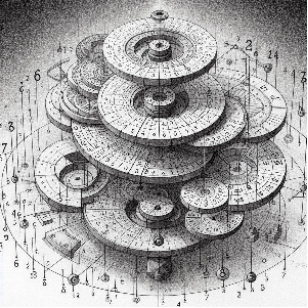Number Bases - Numeral Systems - Radices

Number bases, also known as numeral systems or radices, are mathematical systems used to represent numerical quantities. The radix determines the number of unique symbols representing values in these systems. Each digit's position within a number carries a weight corresponding to a power of the radix, enabling the representation of numbers in various bases.
Numeral systems are fundamental in mathematics, computing, and everyday life. The most commonly used numeral system is base 10, also known as the decimal system, which uses ten symbols (0-9). Other standard numeral systems include base 2 (binary), base 8 (octal), and base 16 (hexadecimal), each with its unique set of symbols and properties.
Understanding numeral systems is essential for performing arithmetic operations, encoding data in computing, and comprehending mathematical concepts across different fields.
The decimal system uses ten digits from 0 to 9. Each digit's position represents a power of 10, starting from the rightmost digit as the unit place. It is widely used in everyday arithmetic and mathematics.
Binary System (Base-2)
The binary system uses two digits, 0 and 1. Each digit's position represents a power of 2. It forms the basis of digital computation and is extensively used in computer science and digital electronics.
Octal System (Base-8)
The octal system uses eight digits from 0 to 7. Each digit's position represents a power of 8. It's often used in computer programming and digital systems for its compact representation of binary data.
Hexadecimal System (Base-16)
The hexadecimal system uses 16 digits, 0-9, followed by A to F (or a to f) to represent values 10-15. Each digit's position represents a power of 16. It's commonly used in computing, particularly for memory addresses, colour representation, and encoding binary data.